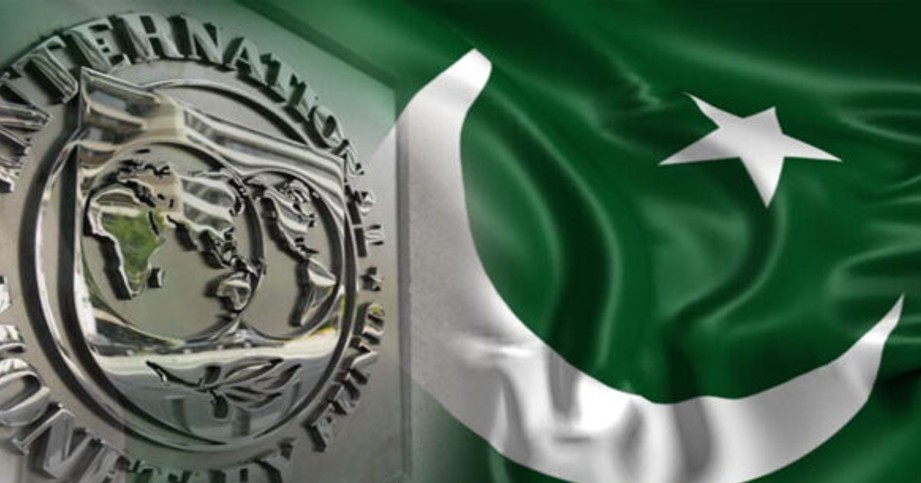By Staff Reporter
ISLAMABAD: Pakistan’s fiscal deficit is expected to narrow to 5.5 percent of gross domestic product (GDP) in the fiscal year ending June 2024, from 7.9 percent a year earlier, as the government curbs non-interest spending and boosts revenue collection, the finance ministry said on Wednesday.
The monthly report, Economic Update and Outlook, issued by the Finance Division, said the primary deficit — which excludes interest payments — shrank to Rs112 billion rupees in the first 11 months of the current fiscal year, from Rs945.3 billion a year ago, “largely due to a 12 percent reduction in non-markup spending.”
The government also projected a “higher growth” of 3.5 percent in the next fiscal year, up from an estimated 2.8 percent in the current one, citing various measures such as an agriculture package, industrial support, export promotion, and encouragement of the information technology sector.
The report came after Pakistan secured a $3 billion new loan from the International Monetary Fund (IMF) last month, ending a two-year hiatus in its $6 billion bailout program that was agreed in 2019. The IMF deal helped avert a near-default by Pakistan on its foreign debt due to an acute balance of payments crisis.
The report said Pakistan’s economy is showing signs of improvement as the fiscal deficit narrowed, the current account deficit shrank, and the agriculture credit disbursement increased in the fiscal year 2023.
It said the recently-approved IMF Stand-By Arrangement (SBA) and other bilateral and multilateral inflows will pave the way to further improve the macroeconomic environment and the confidence of economic agents.
The fiscal deficit during the first 11 months (July-May) of the fiscal year 2023 was recorded at 5.5 percent (Rs4.65 trillion) against 5.2 percent (Rs3.47 trillion) in the same period of last year, while the primary deficit reduced significantly from 945.3 billion rupees last year to 112 billion rupees during July-May fiscal year 2023, it said.
Net federal revenues grew by 24.4 percent to Rs4.17 trillion in July-May fiscal year 2023 against Rs3.35 trillion last year, mainly due to a 31 percent increase in the non-tax collection on account of higher collection from petroleum levy, it added.
On the expenditure side, total spending grew by 20 percent to reach Rs8.85 trillion during July-May fiscal year 2023 against Rs7.36 trillion last year, with most of the increase coming from an 80 percent rise in mark-up payments owing to a higher policy rate.
The current account posted a deficit of $2.6 billion for fiscal year 2023 against a deficit of $17.5 billion last year, mainly due to a contraction in imports, which declined by 27.3 percent to $52 billion from $71.5 billion last year, while exports declined by 14.1 percent to $27.9 billion from $32.5 billion last year.
The update noted that during July-May fiscal year 2023, the agriculture credit disbursement increased by 28.4 percent to Rs1.57 trillion as compared to Rs1.22 trillion last year.
However, large scale manufacturing remained on a negative trajectory with a decline of 9.87 percent during July-May fiscal year 2023 due to supply chain disruptions, inflationary pressures and resultant hikes in input prices, and continued contractionary policy stance at the domestic level to correct the macroeconomic imbalances.
The report said the government is aiming for a higher growth of 3.5 percent in the fiscal year 2024 through various measures such as the Kissan package, industrial support, export promotion, encouragement of the IT sector, and resource mobilization.
Its said the government succeeded in ensuring the sustainability of the external and fiscal sectors through various tough decisions and stabilization measures in the previous fiscal year.
For the fiscal year 2024, the government has unveiled a comprehensive strategy for every sector of the economy in an effort to revive economic growth and move towards a higher inclusive and sustainable growth trajectory, it said.
The update noted that the State Bank of Pakistan’s (SBP) withdrawal of restrictions on imports will create demand for imports, which will be supportive in improving the revenues. On the expenditure side, various austerity measures are in place that will be helpful in reducing non-productive expenditures, it added.
Copyright © 2021 Independent Pakistan | All rights reserved




